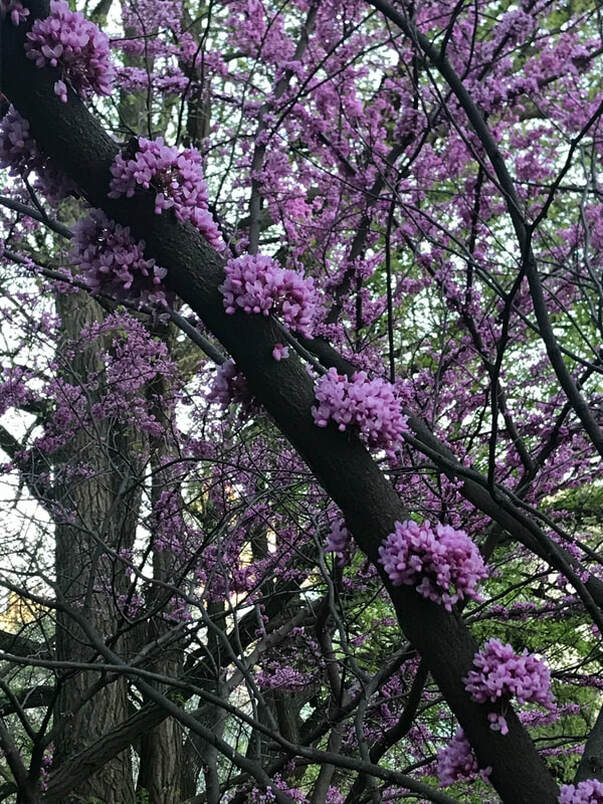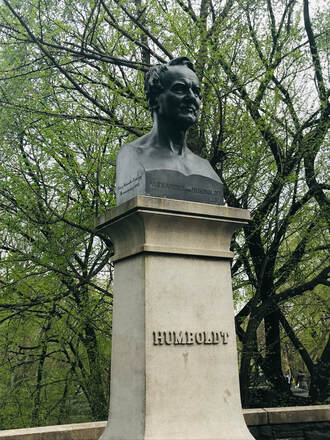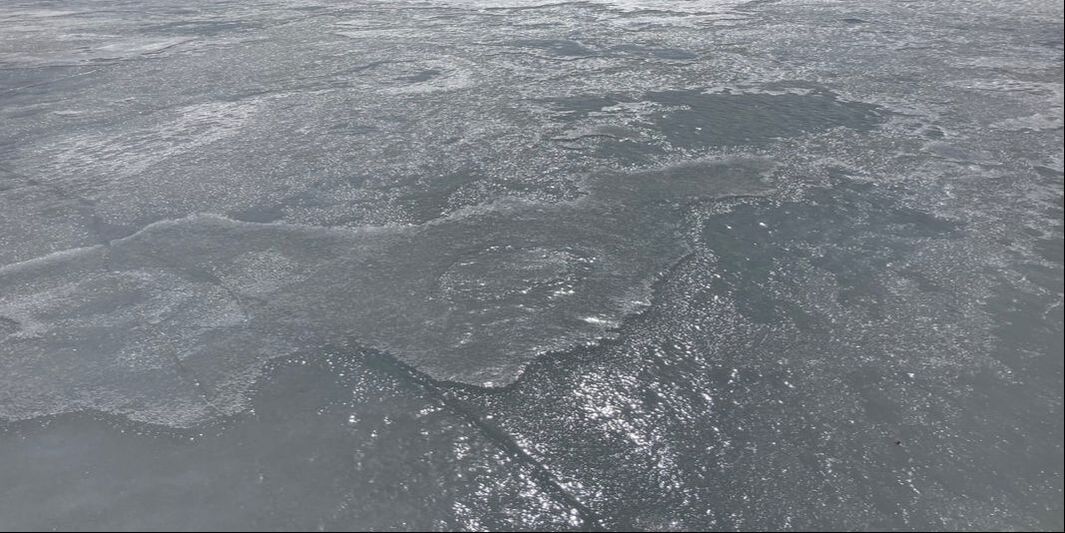 Eastern Redbud in bloom in Central Park Eastern Redbud in bloom in Central Park Trees are bursting forth in flower in our parks, offering heady, sensory ecstasy of color, shape, and smell. Yet missing from the vibrant whites, pinks, yellows, and purples on some trees is a touch of green. On these trees, flowers are blooming but leaves have yet to appear. Why is it that some trees -- Eastern Redbuds, Cornelian Cherry Dogwoods, Magnolias, and Crabapples to name a few -- flower before their leaves unfurl? With most plants, leaves begin to unfold and then flowers bloom, but for some the sequence is reversed. An insightful friend with a sense of humor likened this behavior human adolescence, with often distracting reproductive hormones triggering well ahead of long-term sustaining activities, like education and career advancement. Flowers, as you know, are plants' reproductive structures. Once pollinated, they form fruit that bear seeds that enable new life. Leaves, on the other hand, are plants' source of sustenance, enabling the production of food through photosynthesis. Through chlorophyll and tiny stomata found primarily on the leaf's lower surface (a square centimeter of a leaf contains anywhere from a few thousand to hundreds of thousands) leaves breathe in carbon dioxide and breathe out blessed oxygen on which we depend, while producing sugar for plant nourishment. And through transpiration, water absorbed through root hairs evaporates through stomatal openings from the leaf surface, enabling water and minerals to be absorbed from the soil and conducted to the top of the plat. Without leaves, trees die once stored sugar is depleted. Why would a tree flower before leafing out? Hysteranthous -- the behavior of leaves expanding after flowers have opened -- occurs for a variety of reasons, which give these trees an edge in reproduction. These trees often pollinate through wind (19% of all pollination), which drifts more freely through a tree canopy in the absence of leafy vegetation, making it easier for these trees' inconspicuous flowers (catkins and cones) to be pollinated. And for the 80% of trees that pollinate by vertebrate or insects, early flowering offers the advantage of fewer other blossoms to distract pollinators. For understory trees and plants, like Redbuds, Forsythia, and Witch Hazel, that blossom solely from stored nutrients, flowering early avoids competition with vegetative growth for limited resources. Early flowering also allows for greater time for fruit growth and seed maturation as well as dispersal. Fruits and seed dispersed by birds need to mature to coincide with bird migration. The sequencing of trees' and plants' flowering and leafing is diverse and driven by physical, biotic, and environmental conditions. One wonders how the same impact human reproduction.
0 Comments
 Alexander von Humboldt statue near Central Park Alexander von Humboldt statue near Central Park Inconspicuously situated at Central Park West and 77th Street stands a statue of Prussian naturalist Alexander von Humboldt (1769–1859), largely forgotten in the English-speaking world. As we approach Earth Day it is timely to consider the impact of this extraordinary polymath who invented the concept of nature's inter-connected forces and unity. At a time when Enlightenment philosophers were still grounded in Aristotle's view that "nature has made all things specifically for the sake of man" Humboldt saw the natural world as an interconnected, fragile web of life. Humboldt's textual works, Personal Narrative, Views of Nature, and Cosmos, as well as political essays about the colonies, and his maps and graphical depiction of climate zones, inspired scientists, leaders, poets, and thinkers including Johann von Goethe, Charles Darwin, Thomas Jefferson, Simon Bolivar, Jules Verne, William Wordsworth, early environmentalist George Perkins Marsh, Erst Haeckel who term Humboldt's discipline "ecology", Henry David Thoreau, and John Muir. Entire philosophical and literary movements--German Idealism, Romanticism, and Transcendentalism--can trace their lineage to Humboldt and he revolutionized fields as wide ranging as agriculture, meteorology, zoology, geology, hydrology, and botany. Over 300 plant and 100 animal species are named after him, as are minerals, mountains, geologic formation, glaciers, waterfalls, bays, state and national parks, moon craters, and an asteroid--more than are named after anyone else. At the source of Humboldt's influence was his relentless energy and curiosity, which in the early 1800s led him to travel widely to places where few Europeans had traveled before to conduct hands-on scientific experiments, map geologic characteristics, and collect and record botanical samples. With collections of the latest instruments, ranging from telescopes and microscopes, to barometers and pendulum clocks and compasses, he traveled 1700 miles of Venezuela's Orinoco River to the Amazon River basin, across Cuba, Mexico and Peru, (where he climbed Mount Chimborazo, an inactive volcano of nearly 21,000 feet) and across the mountains of Kazakhstan. From evidence accumulated during his travels, he pieced together systemic patterns, similarities, and connections across contents, inventing the classification of plants by climate zones rather than taxonomy. Observing the coastal matching of Africa and South America, he sensed an ancient connection between the continents that presaged our understanding of plate tectonics. Humboldt also identified the devastating ecological consequences of deforestation, ruthless irrigation, and cash crop agriculture, decrying the impact on habitats of man's "insatiable avarice”. Moreover, Humboldt sensed and observed nature not only empirically but viscerally and emotionally. "Nature", he wrote to Goethe, "must be experience through feeling." In her thrilling and meticulously researched biography of Humboldt, The Invention of Nature, (2015), Andrea Wulf reminds us of the contributions of this influencer of influencers and restores his rightful place among the pantheon of scientists. With the arrival of Earth Day, consider the impact of Humboldt; there are few better ways to do so than through Wulf's magnificent biography.  Heightened attention to early flower blooms, described in my previous blog, has awakened my visual awareness and made me more attuned to forms and structures everywhere. Lately I've been particularly attuned to surfaces. By "surfaces" I mean the outermost layer, perceived by sight and touch--boundaries and edges that define, separate, and connect. Consider the many ways to describe surfaces, the characteristics that define them, to name a few: smooth, rough, patterned, textured, hard, soft, straight, curved, color, symmetrical, matte, shiny, reflective. And often, surfaces become all the more intricate the closer one looks. What appears as smooth may in fact be comprised of grooves and particles, with infinite complexity. City life offers an opportunity to notice the surfaces of our built environment, the geometric, smooth facades of buildings, sidewalks, stairways, and interior spaces--walls, floors, ceilings, furniture. What a contrast these views are to the undulating, uneven and surprising surfaces of the natural environment, of trees, flowers and shrubs growing along streets and in parks, of rocks and water. Some say that the "Euclidean geometry" of our built environment impairs our "visual fluency", that we innately crave the visual complexity offered by natural environments, visual fields that feed our brains' ability to absorb complexity. Yet, it is worth considering that the materials that create our built environment derive from natural materials: wood harvested, stones gathered and cut, and metals mined and smelted, transformed from their natural state to be put to our use. On a micro-level, their true natural forms become apparent: the cellular structure of wood, and crystalline structure of metals and rocks. What began as an ordinary day transformed into sensory adventure as I tuned into the surfaces around me. |
About this Blog
Hi! I'm Nancy Kopans, founder of Urban Edge Forest Therapy. Join me on an adventure to discover creative ways to connect with nature in your daily life, ways that are inspired by urban surroundings that can reveal unexpected beauty, with the potential to ignite a sense of wonder. Archives
April 2023
Categories
All
|

 RSS Feed
RSS Feed